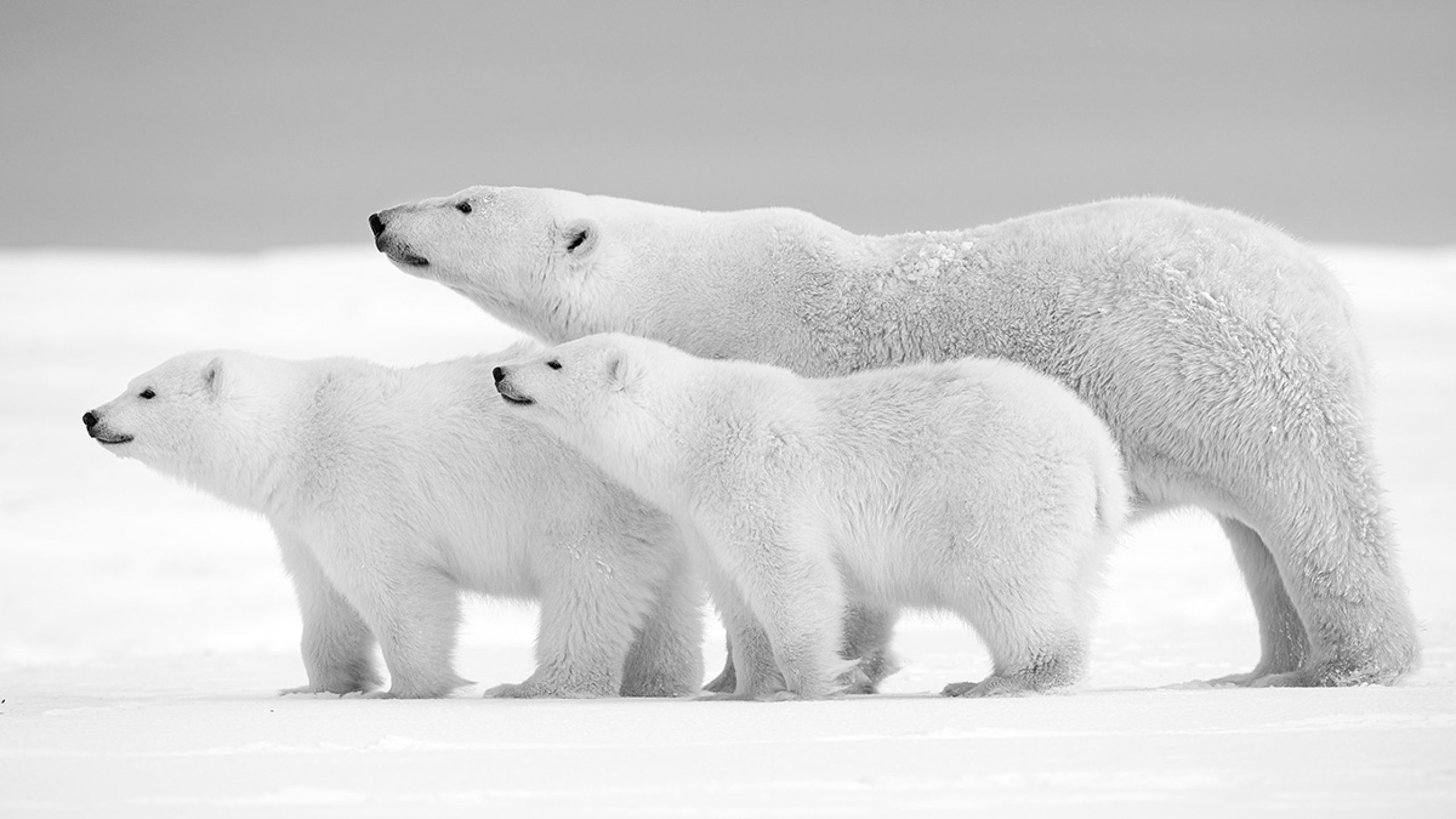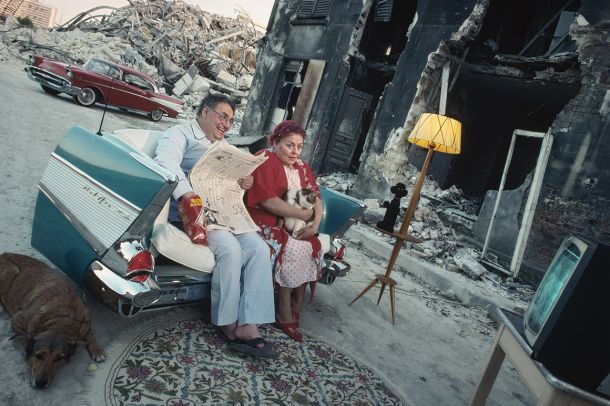Monochrome Wildlife Photography: Revealing the Soul of the Animal Kingdom

Interesting – Photo : © Lionel Maye
Pure emotion: when black and white reveals the animal soul
Monochrome wildlife photography unveils an unseen dimension of the wild, where colors vanish to let pure emotion take center stage. By removing chromatic distraction, black and white elevates expressions, textures, and gazes, turning each image into a timeless artistic work. In this guide, discover how masters of the genre capture the very essence of wildlife, creating works that celebrate this refined and universal beauty.
Summary
- The Essence of Black and White Wildlife Photography
- The Power of Animal Expression in Monochrome
- The Masters of Monochrome Wildlife Photography
- The Art of Printing: Piezography in the Service of Emotion
- Artistic and Heritage Impact of Monochrome Wildlife Photography
The Essence of Black and White Wildlife Photography
The Emotional Power of Monochrome Wildlife Images
Black and white reveals the soul of animals by removing color distractions. The absence of color heightens visual drama and emotional intensity in animal portraits, turning every gaze into a visceral experience that directly connects us to the wild essence.
Light sculpts shapes with dramatic precision, contrast reveals emotional depth. Fur, feathers, or scales appear without artifice, inviting deep contemplation where each detail tells a story. In this monochrome clarity, every captured gaze becomes a silent dialogue between the animal and the observer.
What monochrome reveals:
- Pure expression: with no color, only emotion remains
- Living texture: fur, feathers, and skin become tangible
- Depth of gaze: a direct connection with the animal’s soul
- Natural drama: contrasts that intensify the scene
- Timelessness: images that transcend time
The Timelessness of Monochrome Nature Photography
Monochrome transcends eras by focusing on the essentials. Without dated color references, the images retain their artistic strength across decades, becoming universal testaments to animal beauty that resonate as strongly today as they did in the past.
Since the first photographic prints, black and white has immortalized wildlife with unmatched emotional power. These works follow in the footsteps of ancient cave paintings, revealing an eternal fascination with animality shared across human civilizations.
The Power of Animal Expression in Monochrome
When Emotion Outshines Reality
In monochrome wildlife photography, emotion becomes the true subject. The animal is no longer merely documented in its habitat: it is revealed in its spiritual dimension, its vulnerability, its inner strength. This transformation of reality into pure emotion is the very essence of monochrome wildlife art.
Elements revealed by the absence of color:
| Visual Aspect | Emotional Impact | Message Conveyed |
|---|---|---|
| Strong contrasts | Dramatic intensity | Animal’s strength or vulnerability |
| Revealed textures | Tactile sensuality | Physical connection to life |
| Deep gazes | Immediate empathy | Shared humanity with animals |
| Purified forms | Aesthetic purity | Essential beauty of nature |
| Shadow play | Mystery and poetry | Spiritual dimension of fauna |
Composition in the Service of Emotion
Composition in black and white wildlife photography prioritizes emotional impact over documentation. Every choice – framing, lighting, perspective – aims to strengthen the connection between the animal and the viewer, creating an intimacy unattainable in color.
Compositional principles of monochrome wildlife:
- Subject isolation: the animal becomes the sole protagonist
- Contrast management: emotional hierarchy of the image
- Texture emphasis: tactile sensuality of life
- Visual clarity: focus on expressive essentials
- Gray rhythm: visual musicality of emotion
The Masters of Monochrome Wildlife Photography
Laurent Baheux: Portraitist of the Animal Soul
Laurent Baheux elevates monochrome wildlife photography with an approach that reveals the individuality of each creature. His work transcends mere documentation to create true soul portraits, where each animal reveals its unique personality in a silent dialogue with the lens.
Baheux’s Artistic Universe:
- Intimate portraits: unveiling the animal’s individual personality
- Powerful contrasts: deep blacks and brilliant whites to heighten drama
- Contemplative approach: suspended moments revealing the animal’s essence
- Respectful humanization: a gaze that honors each creature’s dignity
- Ecological commitment: beauty that raises awareness for conservation
His project “Wild Africa” perfectly illustrates this approach, combining pure artistic beauty with a message of preservation. Each image becomes a visual manifesto for wildlife protection, where aesthetic emotion serves the environmental cause.
Vincent Munier: The Minimalist Poetry of Wildlife
Vincent Munier embodies a poetic approach to monochrome wildlife. Influenced by Japanese aesthetics, he develops a visual language where the animal harmoniously integrates into refined compositions, creating perfect symbiosis between creature and environment.
Munier’s Artistic Signature:
- Japanese-inspired minimalism: extreme compositional refinement
- Landscape integration: animal and environment in perfect harmony
- Contemplative patience: waiting for the perfect emotional moment
- Tonal subtlety: infinite gray range revealing nuance
- Subliminal ecological message: awareness through pure beauty
The New Masters of the Genre
Contemporary monochrome wildlife photography sees the emergence of new talents who continue and renew this artistic tradition. These photographers develop personal approaches while respecting the legacy of the masters, creating a visual language suited to today’s challenges.
Characteristics of the New Generation:
- Respectful technical innovation: new tools serving classic emotion
- Contemporary themes: climate change, urban coexistence
- Narrative approaches: cohesive series exploring specific worlds
- Environmental engagement: art in service of modern conservation
The Art of Printing: Piezography in the Service of Emotion
Initial Labo: Technical Excellence in Piezography
Monochrome wildlife photography finds its full expression in fine art printing. Initial Labo, partner of Une Image pour Rêver, masters the revolutionary technique of Piezography, an exclusive printing process that brings out the emotional subtlety of animal black and white.
Piezography: An Exceptional Technique for Monochrome Art
Piezography uses up to 7 different gray inks to create an unparalleled tonal range. Unlike conventional color prints that simulate gray, this dedicated monochrome technique reveals every emotional nuance with exceptional precision.
Advantages of Piezography for Wildlife Art
Technical and artistic superiority:
- Extended tonal range: 7 shades of gray for maximum emotional richness
- Deep blacks: absolute blacks enhancing dramatic power
- Subtle whites: pure highlights preserving fine details
- Longevity: optimal resistance to degradation (over 100 years)
- Tactile rendering: paper texture revealed by specific inking
The Excellence Process at Initial Labo
Each Piezography print follows a rigorous protocol ensuring artistic integrity:
Fine Art Print Creation Steps:
- Custom calibration: color profile tailored to each artwork
- Paper selection: support chosen based on artistic intent
- Piezography printing: using the 7 dedicated gray inks
- Quality control: validating emotional fidelity
- Museum-grade finish: preparation for optimal conservation
Fine Art Papers and Emotional Impact
Paper choice directly influences the emotional impact of monochrome works:
| Paper Type | Texture | Emotional Impact on Wildlife |
|---|---|---|
| Baryta paper | Smooth surface | Detail precision, modernity |
| Textured matte paper | Visible grain | Tactile sensuality, intimacy |
| Fiber paper | Pronounced texture | Authenticity, artisanal character |
| Pearl paper | Subtle sheen | Elegance, contemplative refinement |
Artistic and Heritage Impact of Monochrome Wildlife Photography
Monochrome Photography in the Service of Conservation
Black and white reveals the essence of animals through their shapes and textures with an emotional force that color cannot match. This universal language speaks directly to the soul, promoting a deep awareness of the fragility and beauty of the wild.
Monochrome images serve as powerful visual manifestos for conservation. Their emotional strength denounces the threats to wildlife with striking effectiveness: a single gaze captured in black and white moves more deeply than pages of statistics, inspiring real-world action.
Awareness Power of Monochrome:
- Immediate emotion: instinctive connection with the animal
- Universal message: cross-cultural understanding
- Lasting memory: images that leave a mark
- Personal engagement: viewer becomes an actor
- Visual legacy: testimony for future generations
Artistic and Heritage Value of Monochrome Prints
Black and white wildlife fine art prints in Piezography are both artistic and emotional investments. Each work is limited to 12 prints maximum under French law, signed and numbered, with a certificate of authenticity guaranteeing its heritage value.
Value Criteria of a Monochrome Wildlife Print:
- Edition rarity: strictly limited to 12 prints
- Technical excellence: Piezography print from Initial Labo
- Artist recognition: photographer’s reputation
- Emotional impact: expressive strength of the piece
- Artistic message: coherence in the creative journey
Market Trends in Monochrome Wildlife Art
The market for monochrome wildlife photography is gaining recognition. Collectors particularly value works that combine technical excellence, authentic emotion, and environmental message, driving growing demand for exceptional prints.
Contemporary Market Trends:
- Growing demand: increasing environmental awareness
- Technical recognition: appreciation for Piezography
- Committed collectors: activist purchases for conservation
- Institutionalization: integration into museum collections
- Heritage transmission: artworks passed on to future generations
The Eternity of Monochrome Emotion
Monochrome wildlife photography transcends mere documentation to become a universal language of emotion. By eliminating color, it reveals the very essence of the connection between humans and animals, creating timeless works that touch the soul while raising awareness of our world’s fragile beauty.
Thanks to exceptional techniques like Initial Labo’s Piezography, these captured emotions find their purest expression in fine art prints that preserve and enhance the original artistic intention. Every shade of gray becomes meaningful, every contrast reveals a truth about the animal condition.
For lovers of authentic art and defenders of nature, investing in monochrome wildlife photography means acquiring more than a decorative piece: it is owning a fragment of eternity, a testament to wild beauty that will resonate with the same emotional force a hundred years from now.
Discover our exclusive collection of monochrome wildlife photographs on Une-image-pour-rever.fr, where each Piezography print celebrates the perfect blend of art, emotion, and commitment to preserving our natural heritage.



